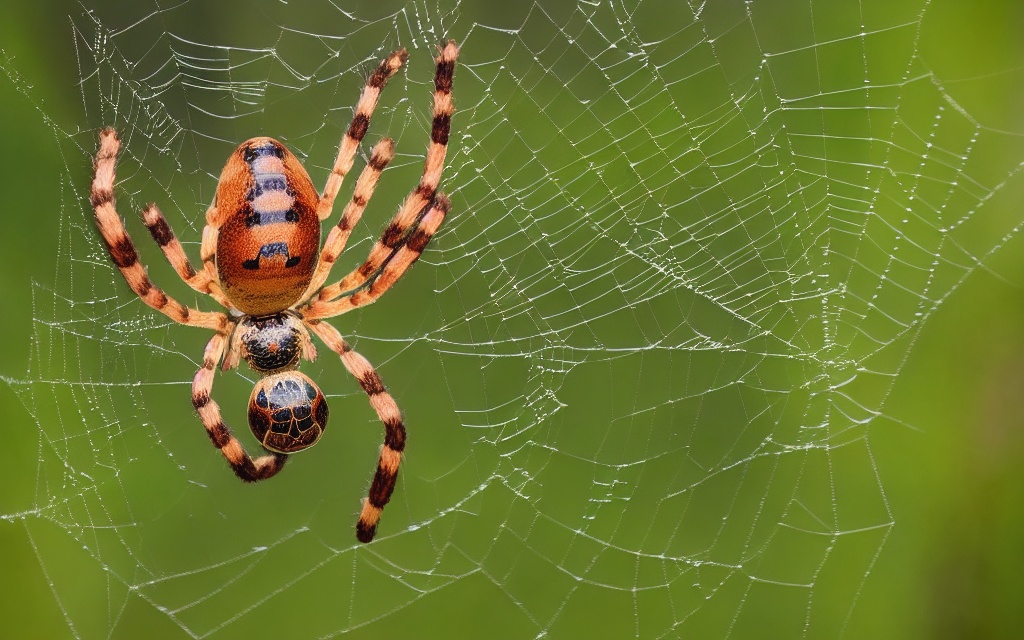Hatch Eggs Easily: Master the Warm Water Trick
Discover the warm water trick that’s revolutionizing the way you hatch eggs at home. Whether you’re an experienced breeder or a curious hobbyist, this method promises a higher success rate and healthier chicks. In this article, you’ll learn the ins and outs of using warm water to improve your hatching process.
You might think you’ve tried every trick in the book, but the warm water technique is a game-changer. We’ll guide you through the simple steps, the science behind it, and the amazing benefits it brings to your hatchery. Stay tuned to unlock the secrets of successful egg incubation with this innovative approach.
The Warm Water Trick: Revolutionizing Egg Hatching
Have you ever wondered if there’s a better way to hatch your eggs at home? The warm water trick might just be the game-changer you’re looking for. Utilizing a warm water bath can significantly increase the success rate of your hatchlings, while also boosting their health right from the start.
Temperature control is crucial in incubation, and that’s where warm water comes into play. It offers a consistent heat source that’s often more reliable than traditional incubators. By maintaining a stable temperature, you’re less likely to experience the fluctuations that could endanger the delicate process of egg development.
Here’s what you need to know to get started:
- Ensure the water temperature is steady at 99-102 degrees Fahrenheit, the optimal range for most eggs.
- Submerge eggs in a way that keeps them evenly heated without fully covering them.
- Monitor the water level and temperature regularly to ensure the conditions remain ideal.
By embracing this method, your hatch rate could soar as each egg receives a uniform heat distribution unlike the sometimes patchy warmth from dry incubators. This could mean the difference between success and disappointment, as even a small variance in temperature can result in hatching failure.
Implementing the warm water trick isn’t just about improving hatch rates; it’s also about yielding stronger, more resilient chicks. These early stages of development are critical, and providing a nurturing environment gives them the best start.
As you consider adopting this technique, remember that the key is consistency. With the right setup and attentive care, you’re well on your way to witnessing the wonders of new life as it begins in the comfort of your own home.
Benefits of the Warm Water Technique
When you’re looking to hatch eggs successfully, the warm water technique offers several compelling advantages. First and foremost, this method improves hatch rates. Due to the stable heat from the warm water, embryos develop in an optimal environment, which directly correlates with a higher number of chicks emerging from their shells.
Another significant benefit is the robustness of the hatchlings. Chicks that experience consistent temperatures during incubation tend to be stronger and more capable of thriving post-hatch. This isn’t just a coincidence; a steady incubation environment helps avoid defects and facilitates the full development of the chicks’ vital systems.
Warm water incubation also allows for greater control over humidity levels. Proper humidity is critical during the hatching process, and warm water provides a moist environment that air-based incubators struggle to maintain consistently. This helps in preventing the drying out of the egg contents and aids the chick in breaking free from the shell when it’s time.
The simplicity of monitoring and managing warm water incubation is a game-changer, especially for novices in the field of egg hatching. By using basic equipment like an aquarium heater and a thermometer, you can easily keep the conditions optimal for your developing eggs. The ease of set-up and lower cost compared to high-end incubators makes this a viable option for hobbyists and small-scale farmers alike.
Understand that perfection in the warm water method isn’t achieved overnight. It’s all about trial and error, patience, and giving careful attention to your eggs. However, with some practice, you’ll find that mimicking a mother hen’s natural incubation process can give you incredible results, with a touch of personal satisfaction that comes from your hands-on involvement.
Step-by-Step Guide to Using Warm Water for Hatching Eggs
Embarking on hatching eggs with the warm water technique requires a delicate touch and precise steps. Here’s a straightforward guide to get you started.
Prepare Your Supplies
First up, gather all your essential equipment. You’ll need:
- A reliable warm water bath or brooding pan
- A thermometer to monitor water temperature
- An egg candler to check for embryo development
- A gentle cloth to handle eggs
Make sure your warm water bath can maintain a steady temperature range of 99–102°F, critical for proper embryo development.
Set the Eggs
Once your setup is complete, carefully place the fertilized eggs into the water. Be gentle to avoid causing any damage. The water level should be high enough to cover the eggs but low enough to prevent floating.
Monitor and Turn the Eggs
Every few hours, turn the eggs to ensure even heat distribution, mimicking a mother hen’s natural movements. Pair this task with temperature checks to avoid any drastic fluctuations which can harm the developing chicks.
Use an egg candler periodically to check for embryo growth. It’s not only fascinating to watch but confirms that your efforts are yielding results.
Adjust Humidity Levels
During incubation, maintaining the right humidity is vital. You’re aiming for about 55% to 60% humidity for the first 18 days and a slight increase up to 65% in the final days before hatching.
Monitor the eggs for signs of pipping, which signals your chicks are ready to emerge. At this stage, refrain from turning the eggs and let nature take its course.
Remember, mastering the warm water method isn’t about rushing the process but nurturing the life inside the eggs with patience and care. Keep a vigilant eye on your eggs, refine your technique with each batch, and enjoy the journey of bringing new life into the world.
By sticking to these guidelines, you’ll develop the skills needed to hatch healthy chicks, bolstering the effectiveness of this age-old tradition with modern precision.
Understanding the Science Behind the Warm Water Method
Before diving into the warm water method’s intricacies, you’ll want to grasp why and how this technique can facilitate the successful hatching of eggs. At the core of this method is the egg’s response to temperature changes. In nature, a mother bird uses her body warmth to incubate her eggs. Similarly, by employing warm water, you’re replicating this environment, but with greater control and precision.
Eggs have pores that allow for the exchange of gases, a crucial aspect for the embryo’s development. Warmth not only stimulates development but also ensures the right conditions for these exchanges. Warm water consistently transmits heat, which penetrates the eggshell and reaches the embryo uniformly. It’s essential to maintain a stable range between 99°F and 102°F, as even small deviations can hinder the embryo’s growth or cause developmental abnormalities.
Precision in humidity control is vital. The warm water generates humidity which, in the right amounts, prevents the egg’s contents from drying out, allowing for smooth embryo development. This is where tools like a thermometer and a hygrometer become indispensable. You’ll want to keep an eye on these to ensure the environment stays optimal throughout the incubation period.
Turning the eggs is another key factor replicated by this method. In nests, mother birds naturally perform this to ensure heat distribution is even. By gently rotating the eggs in the warm water bath, you’re mimicking this very action. It prevents the embryo from sticking to the shell and promotes proper organ development.
In essence, the warm water incubation method is a balance of temperature, humidity, and careful handling. It’s a blend of science and patience, allowing you to craft the perfect conditions for new life. To implement this technique effectively, it’s not just about following the steps; it’s about understanding how those steps interact with the biology of the egg.
Tips for a Successful Hatching Process
Achieving successful hatch rates with the warm water method hinges on several key factors. You’ll need to be mindful of specific details to ensure your eggs have the best chance at developing into healthy chicks.
Maintain Consistent Temperatures: The embryos inside the eggs depend on a stable thermal environment. Your incubator should provide a constant temperature. Sudden changes can be fatal to the delicate life within.
- Aim for a temperature range of 99.5 to 100.5 degrees Fahrenheit.
- Use a reliable incubator with a proven track record of consistent temperature regulation.
Control Humidity Levels: Just as critical as temperature, humidity plays a vital role in the hatching process. Too much or too little can disrupt the moisture balance within the egg.
- The first 18 days require a humidity level of 45-55%.
- During the last three days known as the “lockdown period”, increase humidity to 65-75%.
Rotation Is Key: Regular turning simulates the natural actions of a brooding hen and prevents the embryo from sticking to the shell.
- Turn the eggs gently at least three times a day for the first 18 days.
- After day 18, cease all turning to prepare for hatching.
Candle to Check Development: Candling allows you to look inside the egg and assess embryo growth without disrupting the environment within.
- Invest in a quality candling lamp designed for clarity and ease of use.
- Candle eggs periodically to check for viability but do so swiftly to keep temperature and humidity disruptions to a minimum.
Sanitize Your Equipment: Always start with clean and disinfected equipment. This will minimize the risk of bacteria harming the embryos.
- Clean your incubator thoroughly before setting your eggs.
- Use a disinfectant that’s safe for eggs and effective against common pathogens.
Remember, patience is crucial. Hatching is a process that can’t be rushed. Monitoring and adjusting incubator settings as necessary will carry you through to a rewarding result. Keep a close eye on the developmental progress of your eggs, and make adjustments to the incubator’s environment in response to the feedback you receive from the candling and other observations.
Conclusion
Harnessing the warm water trick to hatch eggs can be a fulfilling endeavor, provided you’ve followed the steps outlined. Remember that precision in temperature and humidity control, along with meticulous handling, can make all the difference. Keep an eye on your eggs’ development through candling and remain vigilant about sanitation to prevent any setbacks. With patience and attention to detail, you’ll be on your way to witnessing the miracle of life as your eggs hatch. Stay consistent, and soon enough, you’ll reap the rewards of your dedication to the hatching process.
- What Makes a Good Halloween Haunted Yard: Tips for a Spooky and Fun Outdoor Experience - October 27, 2025
- Where Can I Sell Flowers From Home? Top Places to Start Your Floral Business Today - October 27, 2025
- When Is the Best Season to Sell Outdoor Furniture in the US? Ultimate Seasonal Guide - October 26, 2025




